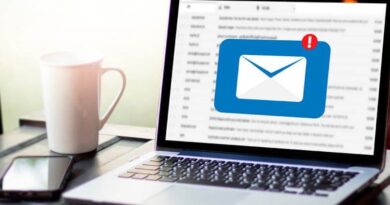7 tips to create strong passwords and not die trying
When it comes to creating strong passwords, we often make mistakes that can make the task of cyberattacks easier. As original as they may seem, impossible and unshakable, in reality they are not.
It is very likely that you have heard stories about large services that have been the victims of a security breach. And not only are large companies the target of cybercriminals , so are medium-sized and small companies, precisely because their security systems are usually easier to attack.
With this type of problem we are frequently forced to change our passwords immediately so that no one steals our data, but there are passwords so bad that they do not need security flaws, they alone put you at risk. However, many continue to resort to the mythical ” 12345 ” or directly entering ” password “, two of the most used passwords in the world.
Today we give you some tips to create strong passwords. Ready?
1. We recommend that they be made up of at least 8 characters.
2. They must contain characters of at least two of the following three character classes:
-
- Alphabetic (that is, az, AZ); It is not recommended to use the “ñ” or vowels with accents.
- Numeric (that is, 0-9).
- Punctuation and special characters (! @ # $% ^ & * () _ + | ~ – = \ `{} []:”; ‘<>?,. /
3. Do not use passwords that can be easily guessed , such as: o
- A character string derived from the name of the user’s account .
- A character string made up of repeating characters.
- A word contained in a dictionary (Spanish or foreign). That’s a little candy for cybercriminals!
- A dictionary word followed or preceded by a character (for example: “word1” or “Xword” or “word!”.
- A given name : Names of relatives, friends, pets, cities, of your favorite actress, etc.
- Birthday dates or other personal information such as your address or phone number.
- Sets of letters or numbers that follow a simple pattern, such as aaabbb , qwerty , abcdef , 123321 , and so on. This never!
4. We recommend changing at least once every year.
5. Never ask for or reveal passwords via email.
6. You should avoid using the same password provided on all systems or services. For example, if you use several email accounts, you must use different passwords for each of the accounts.
7. Never write or reflect the password on a paper or document where it is recorded. Nor should they be saved in text documents within the computer or device itself (example: do not save the passwords of debit / credit cards on the mobile phone or the passwords of emails in text documents within the computer),
We know that it may sound complicated. Think of new passwords for each account, remember them all, renew them annually … for this reason, we want to share with you some free resources that will surely be of use to you
- Last pass
If you have trouble remembering all your passwords, you can always turn to a password manager. Last Pass is an example, which in addition to management, also generates secure passwords in an alternative way:
https://www.lastpass.com/es
- KeePass
If you are looking for a good free manager, KeePass is also a good option. Find all the info in the following link:
https://keepass.info/




